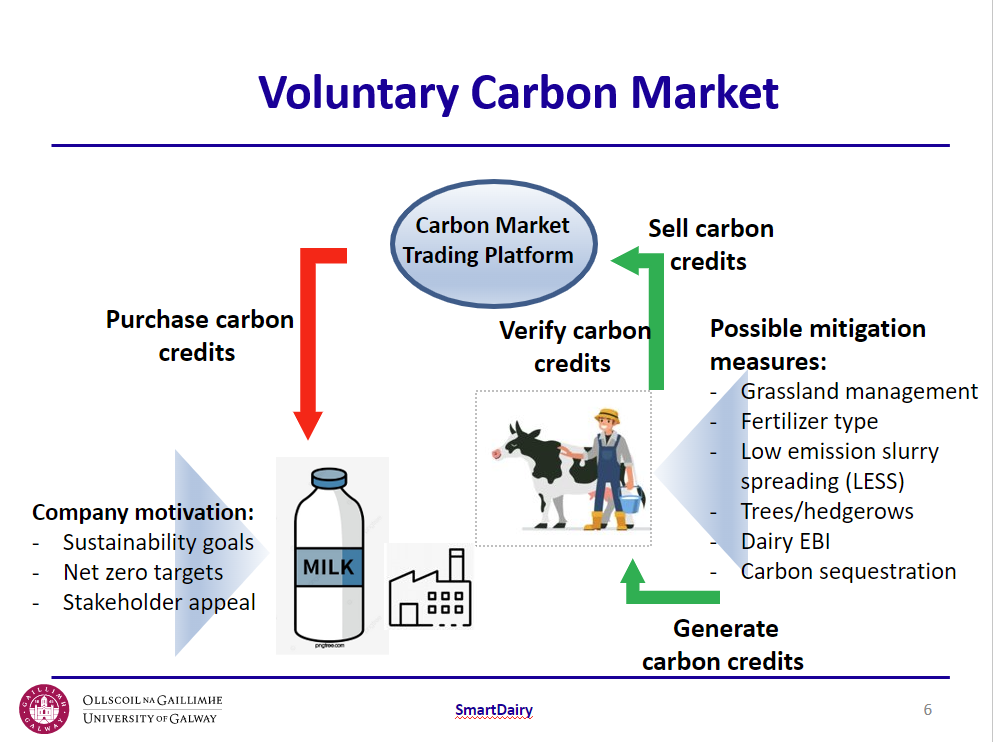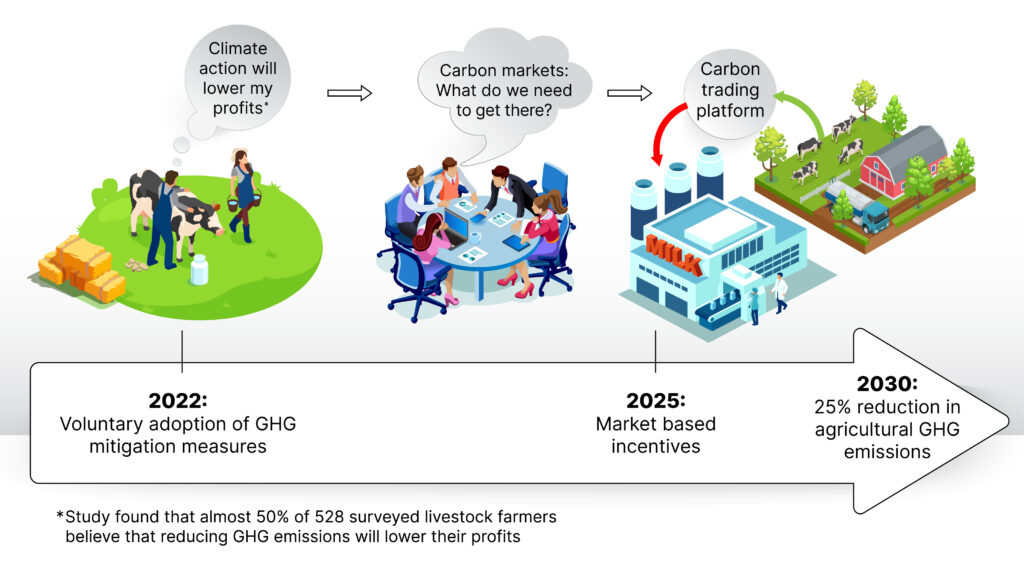Doris Laepple and Julian Worley
Discussion about how to balance the climate crisis and the need to produce enough food for a still growing global population have dominated media and new outlets in recent months. This is especially true in Ireland where a almost 40% of greenhouse gas (GHG) emissions arise out of the agricultural sector. This has led to a push to reduce carbon emissions from the agricultural sector by 25% by 2030 in Ireland, which has fallen heavily on the farmers. The SmartDairy Project aims to help farmers, especially dairy farmers since they are under pressure to reduce GHG emissions , by testing the possibility of a functioning carbon credit market to help finance the adoption of climate smart production practices.
A carbon credit market is a market where carbon credits, created by farmers would be sold to buyers, most likely companies, helping to reduce GHG emissions in the dairy sector. Farmers would generate these credits by taking up climate smart innovations and practices such as clover and imporved grassland management, planting trees and managing hedge rows, and other practices found to reduce GHG emissions. These practices and innovations would then be evaluated by a third party to calculate the level of carbon emissions taken out of the atmosphere or prevented from entering the atmosphere all together. This evaluation would then equate to a corresponding level of carbon ‘credits’ that have been created by the farmer which they can trade and sell. These credits would be traded on a platform where buyers like food processing and producing companies can purchase them.

To implement this kind of carbon credit market in the Irish agri-food sector, the SmartDairy team started at the goal and worked backwards. If we imagine a well-functioning carbon market existed already in Ireland, what would it look like? Who would be involved and what would they be doing? Who and what were we missing? Then further after that, what are the hurdles to making this carbon market a reality, and how can we overcome them? To answer these questions, we brought in several stakeholders from the Irish dairy sector to join in a stakeholder workshop that was held on October 21st. Together we came up with four key themes to be discussed.

The first was the lack of information generally surrounding carbon credit trading, especially how the process would work and what is required to participate. This lack of information led to concerns about confusion both for the public and for farmers which would lead to a lack of support and participation, respectively. It was concluded that any informational campaigns for the carbon credit market would have to be planned with care and thought taken for clarity of information and ease of understanding. The second key theme was what farmer practices would be eligible for inclusion into the market scheme. The consideration of additionality was important for this key theme, as the practices we are hoping to encourage help reduce the level emissions from where they currently are at baseline. Since the SmartDairy project market is a voluntary carbon market, only newly adopted practices should be considered. Along with this, practices which take carbon out of the atmosphere (sequestration) versus those which prevent carbon being released in the first place (mitigation) should be treated differently, as they have different environmental effects. How exactly these two should be treated differently was the third key theme. Along with treating these two types of credits differently, the issues of monitoring, verifying, and reporting (MRV) the creation of the credits was a topic of long discussion, and our fourth key theme. It was concluded that the MRV of the market would need to be done by a trusted organization. The exact nature of this organization, if it is governmental or industry based, and how involved it would need to be as of yet unsettled.
Based on the dairy stakeholder input, the next step is to test the carbon market. This will be done with living labs where dairy farmers implement carbon mitigation practices and then are matched to industry buying partners who will pay them for their implementation. Check in later to see our experience from that.
Leave a Reply